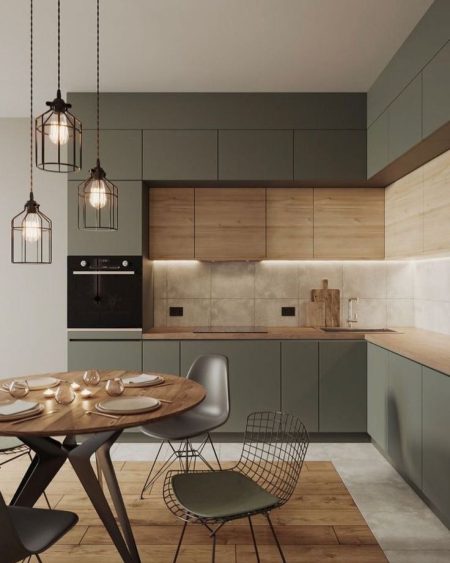The holidays are an exciting time of the year, where a great deal of time is spent around the home. But along with all the cheer, there’s always a chance of the unexpected. It is estimated that holiday decorations cause an average of 790 home structure fires each year, resulting in about $13 million in direct property damages.
Whether you need emergency repairs or a much-needed kitchen upgrade, personal loans can be a great way to finance these home renovations. Personal loans feature lower interest rates and higher borrowing limits than other credit products, longer repayment terms, a speedy application process and fast funding.
Property damage statistics
- Between 2015 and 2019, fires caused by holiday decorations — not including Christmas trees — resulted in $13 million in direct property damage.
- Thanksgiving, Christmas Eve and Christmas day were the three leading dates in 2019 for home structure fires that started in the kitchen.
- Cooking fires were three times more likely during Thanksgiving than any other winter holiday.
- Candles are responsible for 45 percent of residential fires that occur during December.
- Another culprit of property damage during the holidays is Christmas trees. About 160 residential fires between 2014 and 2018 began with Christmas trees, causing over $10 million in direct property damage.
- Lighting decorations were involved in almost half of Christmas tree fires, starting roughly one in five of these incidents.
- Besides fires, water damage is also common during the winter holidays. In 2020, roughly 20 percent of homeowners reported losses were caused by water damage and freezing.
- The average homeowners insurance claim for property damages related to water and freezing damage was $11,650 between 2016 and 2020.
Home renovation statistics
- The best time of the year for home remodeling is the fall. Demand cools off for contractors, and many are willing to provide a discount to secure jobs.
- Weatherstripping and caulking are some of the most popular renovations during the holidays, jumping by over 10 percent in December alone.
- Repairs to heating systems also jump during December. Furnace repair costs range from $125 to $480, but depending on the damage, you could spend upwards of $4,000.
- Hardwood floor refinishing and new wood flooring are among the home renovations with the highest return on investment, with an average return of 147 percent and 118 percent, respectively.
- Replacing the roof and the garage door have the third-highest return on investment, with an average return of 100 percent.
- Kitchen and bathroom makeovers are the most popular interior home renovations, regardless of the season, accounting for 36 percent and 30 percent of all home renovations, respectively.
- The average cost to remodel a kitchen is $28,279, while the average bathroom remodel costs about $27,164.
Financing home improvements with personal loans
Home remodeling projects can cost anywhere from $25,000 to $45,000 — and that’s on the low end. Depending on the size of your home, the area where you live and the extent of the renovations you wish to take on, you could spend upwards of $76,000.
While cash from savings was the top financing choice for home improvement projects in 2021, not everyone can afford to pay for these expenses out of pocket. That’s when taking out a personal loan can come in handy.
Personal loans usually have fixed interest rates and repayment terms ranging from one to 10 years. Depending on the lender, you can take out a loan for as little as $1,000 or as much as $100,000. Personal loans also have lower interest rates than other unsecured credit products, like credit cards, making them a less expensive option.
Getting approved for a personal loan is also easier than taking out a home equity loan or a cash-out refinance, plus you don’t have to put your house on the line to get it. Funding is usually much faster too. Some lenders even offer same-day funding, making them an ideal option for emergency home repairs or if you’re on a tight deadline.
Holiday home repair
The holidays are an exciting time of the year, but they can also come with some chaos tied to them. Fire is the most common type of property damage during the fall and winter holidays.
According to the National Fire Protection Association (NFPA), Thanksgiving, Christmas Eve and Christmas day were the leading dates for cooking fires in 2019. Not only that, but between 2015 and 2019, fires caused by holiday decorations (except for Christmas trees) resulted in $13 million in direct property damage.
Average cost to repair fire damage by state
Fire damage restoration is one of the most expensive types of home renovations as it is a multi-step process. It involves cleaning burnt material, soot and smoke removal, sanitation of each room affected and construction.
Depending on the damage, fire restoration can cost anywhere from $2,500 to $50,000, with the average fire restoration cost being $11,900, according to Fixr.com.
The chart below shows the average cost to repair fire damage by state. These estimates consider the average size of homes in each state and the average fire restoration cost, ranging from $4 to $6.50 per square foot. That said, these figures assume a full home renovation. The cost can be much less than that if only a portion of your house was damaged or if you live in a smaller home.
Average property damage cost over the years due to fires
The average cost of property damage due to residential fires has decreased over the last 40 years. On average, fire damages caused 7 percent fewer losses in 2021 compared to 1981, as you can see in the chart below.
Despite the decrease in damage, fires still cause significant structural damage to homes in the U.S. each year, which is why it’s important to take precautions. These are some ideas to protect your home during the holiday season:
- Before installing any decorations, ensure all your smoke detectors are working.
- Buy flame-retardant or flame-resistant decorations.
- Do not hang lights with damaged or exposed wiring.
- Choose flameless decorative candles.
- If you prefer regular candles, avoid putting them near surfaces or objects that can burn.
- Do not leave the kitchen unattended while the stovetop or oven is on.
- If purchasing a natural Christmas tree, choose one with fresh, green needles that don’t fall off easily.
- Remember to turn off the lights on your Christmas tree before going to bed or leaving the house.
Holiday home remodeling
When it comes to home remodeling during the holidays, homeowners tend to focus more on interior rooms — a trend that’s been sticking all year round, according to a study by Houzz & Home. In 2021, 70 percent of homeowners upgraded interior rooms, while only 58 percent focused on exterior remodeling.
The most popular space upgraded was the kitchen, accounting for 28 percent of all remodels. Guest and primary bathroom remodels came in second, accounting for 26 and 24 percent of remodels. It’s also worth noting that all these rooms also have a good return on investment of 58 percent or more, as you can see in the chart below.
While home remodeling during the holidays can be chaotic at best, both the fall and winter seasons are great for taking on these projects. For one, demand for contractors cools off, which means you can get more focused attention on your specific project. Then, there’s the prospect of saving money, as contractors may be more willing to offer a discounted price to secure a job for their crew during these slower months.
Other financing options
Whether you need to repair or renovate your home, personal loans are a great option to finance these costs, but they’re not your only option. Here are other ways you can pay for a home remodel.
- Cash-out refi: This option involves replacing your existing mortgage with a larger one, allowing you to take home the difference (your equity). Because a cash-out refi is a type of secured loan, interest rates tend to be pretty low. However, choosing this option means you will potentially pay more on interest over time, not to mention that getting the funds can take weeks, and a lot of paperwork is involved.
- Credit cards: With credit cards, you can get the money right away and borrow as you see fit. The major downside of financing home remodels with a credit card is that the amount you can borrow is usually limited, and they can carry high interest rates. According to the Fed, credit cards currently have an average interest rate of 18.43 percent, while personal loans have an average interest rate of 10.16 percent.
- HELOC: Home equity lines of credit also act as a second mortgage on your home, just like home equity loans. The main difference is that instead of getting a lump sum, you can borrow money as you need up to your borrowing limit. On the downside, if you’re not careful with a HELOC, you could end up overspending. Additionally, interest rates are variable, so payments can be somewhat unpredictable.
- Home equity: Because they use your house as collateral, home equity loans tend to have much lower interest rates than personal loans, and you can borrow larger amounts. They’re a second mortgage on your home, so if you fall behind on your payments, things could get dicey. Besides that, getting approved for a home equity loan is a weeks-long process, which is something to keep in mind if you need the funds fast.
- Home improvement loans: These loans are a type of personal loan. The main difference is that home improvement loans typically offer longer repayment terms and higher amounts than traditional personal loans. But, like other unsecured loans, the main drawback is that you can only secure the best terms and interest rates if you have excellent credit.
- Government loans: The U.S. Department of Housing and Urban Development (HUD) offers several low-cost loan programs to help homeowners make some much-needed repairs. However, these loans tend to have strict requirements and must be used to improve the livability of a space — not just for cosmetic reasons.
- Save: Using your savings to pay for a remodel may make sense if you have a significant nest egg. After all, you won’t be paying any interest on the money used and you don’t have to wait for a lender to disburse the funds. The main drawback is that saving that much could take a long time. Depleting your funds could also leave you worse off financially if you don’t have enough money to pay for an emergency.
How to get a loan with bad credit
Like with other credit products, having excellent credit can help you secure the best terms and interest rates when taking out a personal loan.
If you have less-than-stellar credit, applying with a co-signer can improve your chances of securing a personal loan with a good interest rate. Another option is to apply for a secured personal loan, which uses your car or any other asset as collateral. But if none are an option, you may still be able to secure a good rate by working with a lender that offers personal loans for bad credit.
But whatever option you choose, the most important thing is that you can afford your monthly bill without jeopardizing your financial security.
Read the full article here









